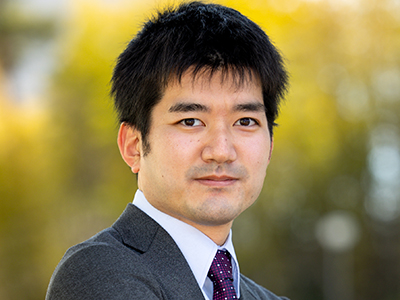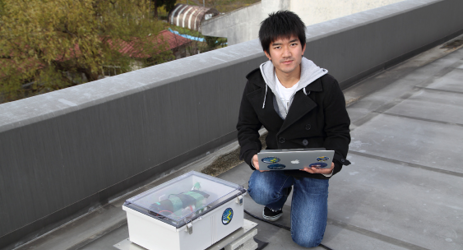Section Awards & Lectures
Atmospheric and Space Electricity Awardee
Early Career Award

Citation:
Yuuki Wada is one of the leading scientists in the field of high-energy atmospheric physics and will be a leader of the Atmospheric and Space Electricity (ASE) section in the upcoming generations. He has been conducting multiwavelength and multisensory studies of high-energy atmospheric phenomena in winter thunderstorms of Japan. He has developed portable and original radiation detectors, and constructed a dense network of gamma ray observation in the coastal area of the Sea of Japan. The high-quality data provided by the network have led to important discoveries such as photonuclear reactions by terrestrial gamma ray flashes (TGFs) and a TGF coincident with the termination of a gamma ray glow. Furthermore, by forming a collaboration not only with gamma rays but also with low-frequency sferics, the atmospheric electric field, and X-band radar observations, he has performed multisensory observations of lightning discharges and thunderclouds, which are the sources of high-energy atmospheric phenomena. With his deep insights into high-energy physics and atmospheric electricity, he is definitely one of the top researchers working in high-energy atmospheric physics.
Yuuki has a very impressive publication record and has made several important contributions to ASE. He has 16 peer-reviewed papers in nine journals including Geophysical Research Letters and Journal of Geophysical Research: Atmospheres. One of the papers, on which he is second author, was published in Nature in 2017 and has 327 citations in Google Scholar at the time of this writing, which is impressive for a researcher who received his Ph.D. just recently.
He received his Ph.D. degree from the University of Tokyo in March 2020. His doctoral dissertation was selected as the best thesis in the Graduate School of Science, University of Tokyo, and was published by Springer Nature as the Springer Theses series. He is now an assistant professor in the Department of Electrical, Electronic, and Info-Communications Engineering, Graduate School of Engineering, Osaka University, Japan.
—Tomoo Ushio, Osaka University, Osaka, Japan
Response
It is an honor to receive the AGU Atmospheric and Space Electricity (ASE) Early Career Award. The ASE section has provided great opportunities to discuss atmospheric electricity, including high-energy atmospheric physics, with our colleagues in the world.
I am deeply grateful to our colleagues in the Gamma-Ray Observation of Winter Thunderclouds (GROWTH) collaborations, especially Dr. Teruaki Enoto, Dr. Kazuhiro Nakazawa, Dr. Takayuki Yuasa, Dr. Kazuo Makishima, and Dr. Harufumi Tsuchiya; and to our collaborators of multiwavelength observations, Dr. Masashi Kamogawa, Dr. Takeshi Morimoto, Dr. Yoshitaka Nakamura, and Dr. Tomoo Ushio.
The citation notes my works on high-energy atmospheric physics, especially on observational studies of winter thunderstorms in Japan. I was interested in particle and nuclear physics and astrophysics when I was an undergraduate student. However, I realized that thunderstorms are a satisfactory target for high-energy physics as they emit high-energy particles close to us.
Winter thunderstorms in Japan are one of the best targets to study high-energy phenomena in thunderclouds and lightning, such as terrestrial gamma ray flashes (TGFs) and gamma ray glows. The low-charge-center structure of winter thunderclouds enables us to detect them at sea level, while most of them have been detected by satellites, aircraft, balloons, and mountaintop experiments. Observations at sea level are low cost in principle but provide data of high quality. In particular, multisensory observations of a radiation monitor array, a radio frequency antenna network for lightning mapping, field mills, and meteorological radars are essential for high-energy atmospheric physics but are almost limited to ground-based experiments.
One of our interests is how high-energy emissions interact with and affect lightning discharges and thunderstorms. High-energy atmospheric physics is a new field in this community and may affect the conventional questions of atmospheric electricity and atmospheric science, or wider fields. AGU and the ASE section provide an excellent opportunity to communicate with scientists in various fields of the Earth and space sciences.
Last, I would like to mention the French satellite mission Taranis. I was involved in the development of the X-ray, gamma-ray, and relativistic electron detector on board Taranis and looked forward to seeing unprecedented data from multiple sensors on Taranis. However, the mission was unfortunately lost due to the launch failure in 2020. While I have been mainly working on ground-based experiments, the spaceborne experiment would have been an essential counterpart for TGF studies. I would like to express my gratitude to the Taranis team.
—Yuuki Wada, Osaka University, Osaka, Japan
Field Photos
